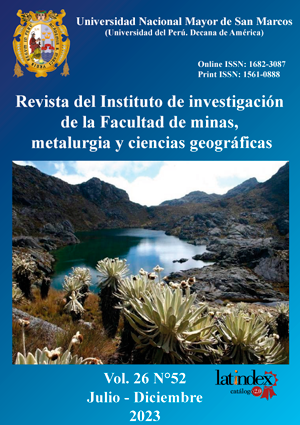Liquidity Abundance Risks
DOI:
https://doi.org/10.15381/iigeo.v26i52.25559Keywords:
Anthropocene, Climate Change, Greenhouse gases, Water Liquidity, Hydrological CycleAbstract
The country has historically been impacted by alterations in the regular dynamics of the climate due to temperature variations, one of whose immanent forms is excessive water liquidity, as a term derived from the etymological origin of the liquid (physical state of water) and the importance of its magnitude. In recent decades, this process has occurred in the context of the enormous emission and concentration of greenhouse gases (GHG) at a planetary level and our geographical heterogeneity with the presence of the Andes Mountains and the influences of the Humboldt Current. and the ENSO event. The objective of the study is to detail the risks faced by the population at the regional level (north coast) in the face of such natural hazards and the negative socioeconomic impacts that have occurred in recent years. The qualitative approach with an ambispective horizon (prospective) is used and the design of international and national documentary content is applied. The results indicate the scientific evidence of the continuous increase in global temperature, in the medium and long term, due to anthropogenic and other factors. Therefore, it is urgent and necessary for the State to make policy readjustments in the face of extreme environmental conditions and the respective regulations immediately.
Downloads
Published
Issue
Section
License
Copyright (c) 2023 Juan Eleazar Anicama Pescorán

This work is licensed under a Creative Commons Attribution 4.0 International License.
AUTHORS RETAIN THEIR RIGHTS:
a. Authors retain their trade mark rights and patent, and also on any process or procedure described in the article.
b. Authors retain their right to share, copy, distribute, perform and publicly communicate their article (eg, to place their article in an institutional repository or publish it in a book), with an acknowledgment of its initial publication in the Rev. Inst. investig. Fac. minas metal cienc. geogr.
c. Authors retain theirs right to make a subsequent publication of their work, to use the article or any part thereof (eg a compilation of his papers, lecture notes, thesis, or a book), always indicating the source of publication (the originator of the work, journal, volume, number and date).






